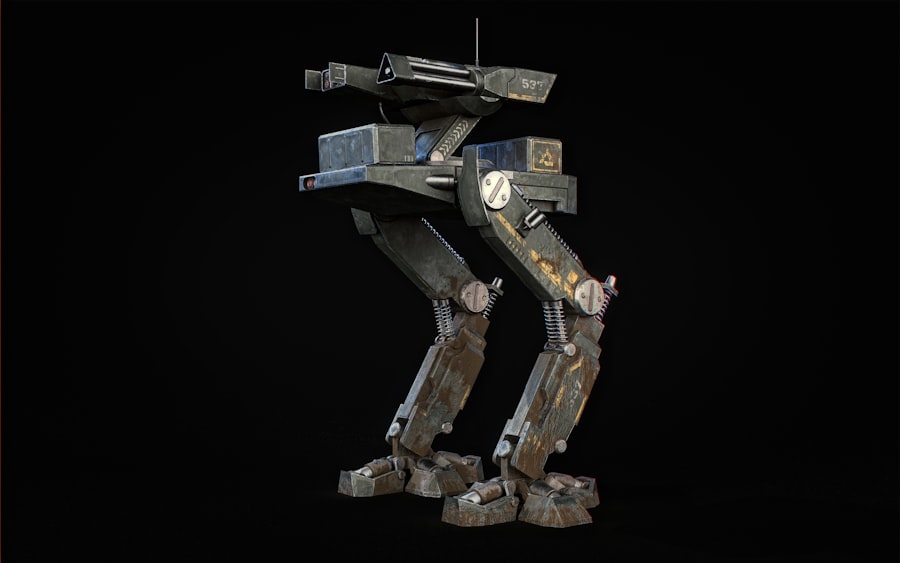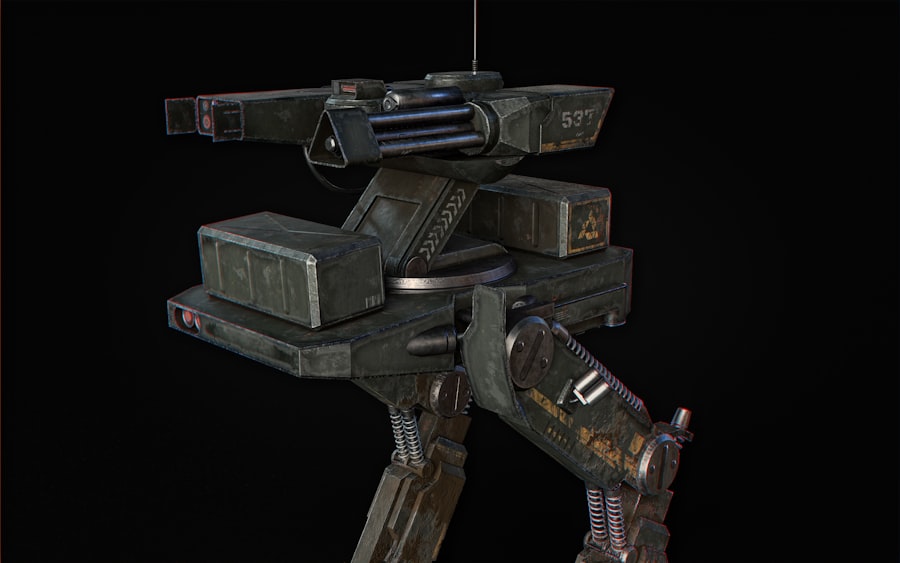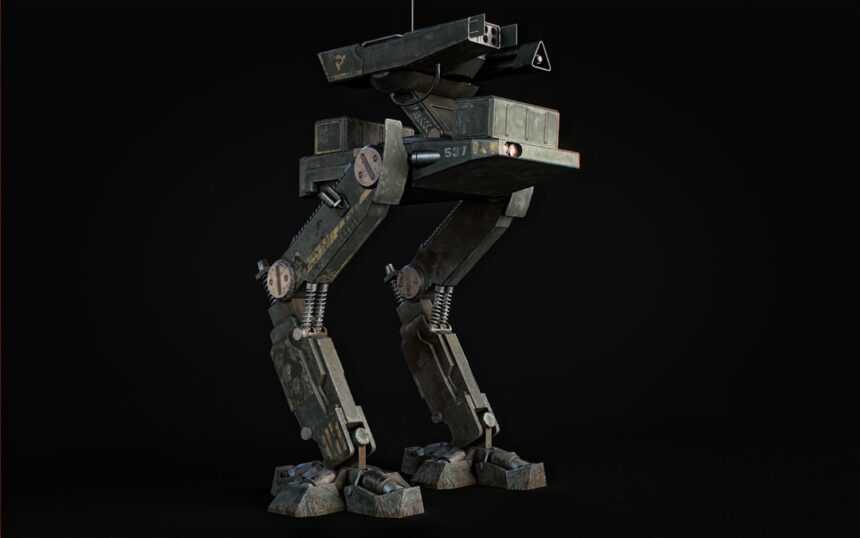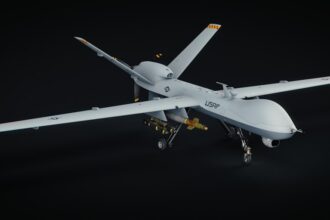In recent years, the proliferation of drones has emerged as a significant challenge to military operations worldwide, and the Russian military is no exception. The increasing accessibility and sophistication of unmanned aerial vehicles (UAVs) have transformed the battlefield landscape, compelling military strategists to reassess their operational frameworks. Drones, with their ability to conduct surveillance, gather intelligence, and deliver precision strikes, have become formidable tools in the arsenals of both state and non-state actors.
For Russia, the threat posed by these aerial devices is particularly pronounced, as they can undermine traditional military advantages and expose vulnerabilities in established defense systems. The conflict in Ukraine has highlighted the effectiveness of drones in modern warfare, showcasing their capacity to disrupt conventional military operations. Russian forces have faced challenges from both Ukrainian UAVs and those supplied by Western allies, which have been employed for reconnaissance and targeted strikes.
This evolving threat has prompted the Russian military to reconsider its strategies and tactics, as the presence of drones can significantly alter the dynamics of engagement. The ability of adversaries to utilize drones for asymmetric warfare has forced Russia to adapt quickly, seeking innovative solutions to counteract this growing menace.
Key Takeaways
- Russian military operations are facing a growing threat from drones, which are being used for reconnaissance, surveillance, and even attacks.
- The Russian military has evolved its tactics in response to drone attacks, focusing on electronic warfare and the development of anti-drone technology.
- Electronic warfare plays a crucial role in countering drone threats, disrupting communication and control signals to neutralize the drones.
- The Russian military is actively developing anti-drone technology to detect, track, and neutralize drones, including the use of jamming and kinetic weapons.
- Unmanned Aerial Vehicles (UAVs) are being increasingly integrated into Russian military operations, impacting strategy, training, and exercises.
The Evolution of Russian Military Tactics in Response to Drone Attacks
In light of the increasing drone threat, the Russian military has begun to evolve its tactics to mitigate the risks associated with UAVs. Traditional approaches that relied heavily on ground forces and armored units are being supplemented with new strategies that incorporate counter-drone measures. This shift reflects a broader understanding that modern warfare requires flexibility and adaptability in response to emerging technologies.
The Russian military has started to integrate drone detection systems into its operational framework, allowing for real-time monitoring of aerial threats and enabling timely responses. Moreover, the evolution of tactics has also involved a greater emphasis on electronic warfare capabilities. By jamming or disrupting drone communications, Russian forces aim to neutralize the effectiveness of enemy UAVs before they can execute their missions.
This proactive approach not only seeks to protect Russian assets but also aims to instill a sense of uncertainty among adversaries regarding their drone operations. As a result, the Russian military is increasingly focused on developing a multi-layered defense strategy that combines traditional military might with advanced technological solutions.
The Role of Electronic Warfare in Countering Drone Threats

Electronic warfare has emerged as a critical component in Russia’s strategy to counter drone threats effectively. By leveraging sophisticated jamming technologies and signal interception capabilities, the Russian military aims to disrupt the communication links between drones and their operators. This tactic not only hinders the operational effectiveness of enemy UAVs but also serves as a psychological tool, instilling fear and uncertainty among adversaries who rely on these technologies for reconnaissance and strike missions.
The integration of electronic warfare into military operations has allowed Russia to create a more comprehensive defense against drone incursions. By deploying mobile jamming units alongside conventional forces, the Russian military can establish a protective umbrella over key assets and troop formations.
As drone technology continues to advance, the importance of electronic warfare in maintaining a competitive edge on the battlefield cannot be overstated.
The Development of Anti-Drone Technology in the Russian Military
| Year | Anti-Drone Technology Development | Milestones |
|---|---|---|
| 2015 | Introduction of anti-drone systems | Initial development and testing |
| 2017 | Enhancement of anti-drone capabilities | Integration of advanced radar and jamming technology |
| 2019 | Deployment of anti-drone systems in military operations | Successful interception of enemy drones |
| 2021 | Continued research and development | Focus on countering evolving drone threats |
Recognizing the urgent need to address the drone threat, the Russian military has invested significantly in developing anti-drone technologies. This initiative encompasses a range of systems designed to detect, track, and neutralize UAVs before they can inflict damage. From advanced radar systems capable of identifying small drones at considerable distances to laser-based interception technologies, Russia is actively pursuing innovative solutions to counteract this evolving threat.
In addition to traditional kinetic approaches, such as missile systems designed specifically for drone engagement, Russia is exploring non-lethal methods as well. These include net-based systems that can capture drones mid-flight and directed energy weapons that disable UAVs without causing collateral damage. The development of such technologies reflects a broader understanding that effective counter-drone measures must be versatile and adaptable to various operational scenarios.
As these advancements continue to unfold, they will play a crucial role in shaping Russia’s military capabilities in the face of an increasingly drone-centric battlefield.
The Use of Unmanned Aerial Vehicles (UAVs) in Russian Military Operations
While much attention is focused on countering drone threats, it is essential to recognize that Russia itself has embraced the use of unmanned aerial vehicles in its military operations. The integration of UAVs into Russian tactics has provided commanders with enhanced situational awareness and intelligence-gathering capabilities. Drones are now employed for reconnaissance missions, target acquisition, and even direct strikes against enemy positions, showcasing their versatility on the modern battlefield.
The use of UAVs has allowed Russian forces to conduct operations with greater precision while minimizing risks to personnel. By utilizing drones for surveillance, commanders can gather real-time intelligence without exposing troops to potential threats. This capability is particularly valuable in complex environments where traditional reconnaissance methods may be hindered by terrain or enemy defenses.
As Russia continues to refine its drone capabilities, it is likely that these unmanned systems will play an increasingly prominent role in shaping military strategy and operational planning.
The Impact of Drone Warfare on Russian Military Strategy

The rise of drone warfare has had profound implications for Russian military strategy, necessitating a reevaluation of traditional doctrines and operational paradigms. As drones become more prevalent on the battlefield, Russia must adapt its strategies to account for their unique capabilities and limitations. This shift involves not only enhancing counter-drone measures but also integrating UAVs into broader operational frameworks that leverage their strengths.
Moreover, the impact of drone warfare extends beyond immediate tactical considerations; it also influences strategic decision-making at higher levels of command. The ability to conduct precision strikes with minimal risk has led to a reevaluation of escalation thresholds and engagement rules. As Russia navigates this new landscape, it must balance the advantages offered by drone technology with the potential risks associated with their use, particularly in terms of international relations and perceptions of aggression.
The Challenges of Detecting and Neutralizing Drone Threats in Urban Environments
One of the most significant challenges facing the Russian military in countering drone threats lies in urban environments. The complexities inherent in densely populated areas make it difficult to detect and neutralize UAVs effectively without risking collateral damage or civilian casualties. Urban landscapes provide ample cover for drones, complicating detection efforts and increasing the likelihood of surprise attacks against military targets.
To address these challenges, the Russian military is exploring innovative solutions tailored specifically for urban warfare scenarios. This includes deploying advanced sensor networks capable of identifying drone activity amidst urban noise and clutter. Additionally, training personnel to operate effectively in urban environments is crucial for enhancing response capabilities against drone threats.
As urban warfare becomes increasingly common in modern conflicts, developing effective countermeasures will be essential for maintaining operational effectiveness.
The Integration of Drones into Russian Military Training and Exercises
Recognizing the importance of drones in contemporary warfare, the Russian military has begun integrating UAVs into its training programs and exercises. This initiative aims to familiarize personnel with drone operations while also enhancing their ability to counteract enemy UAV threats effectively. By incorporating drones into training scenarios, Russian forces can develop a more comprehensive understanding of how these systems operate and how best to respond when faced with aerial threats.
Furthermore, joint exercises that simulate real-world scenarios involving both friendly and adversarial drones allow commanders to refine their tactics and strategies in a controlled environment. This hands-on experience is invaluable for preparing troops for the complexities of modern combat, where drones play an increasingly central role. As training programs evolve to include more advanced drone technologies, they will contribute significantly to enhancing the overall readiness and effectiveness of Russian military forces.
The Legal and Ethical Considerations of Using Drones in Russian Military Operations
The use of drones in military operations raises important legal and ethical considerations that cannot be overlooked. As Russia continues to integrate UAVs into its military strategy, questions surrounding accountability, civilian protection, and adherence to international law become increasingly pertinent. The potential for collateral damage during drone strikes necessitates careful consideration of targeting protocols and engagement rules.
Moreover, the use of drones for surveillance raises concerns about privacy rights and civil liberties, particularly in conflict zones where civilian populations may be affected by military operations. As Russia navigates these complex issues, it must balance operational imperatives with ethical responsibilities toward both its own citizens and those in affected regions. Establishing clear guidelines for drone usage will be essential for maintaining legitimacy and accountability in military operations.
The Future of Russian Military Defense Against Drone Threats
Looking ahead, the future of Russian military defense against drone threats will likely involve continued investment in research and development aimed at enhancing counter-drone capabilities. As adversaries become more adept at utilizing UAVs for asymmetric warfare, Russia must remain vigilant in adapting its strategies and technologies accordingly. This may involve further advancements in electronic warfare systems, anti-drone technologies, and integrated defense networks designed to protect critical assets from aerial incursions.
Additionally, collaboration with domestic defense industries will play a crucial role in driving innovation within Russia’s military sector. By fostering partnerships between government entities and private companies specializing in drone technology, Russia can accelerate the development of effective countermeasures while ensuring that its armed forces remain at the forefront of technological advancements.
The Global Implications of Russian Military Advancements in Anti-Drone Technology
The advancements made by Russia in anti-drone technology have far-reaching implications beyond its borders. As other nations observe Russia’s efforts to counter UAV threats effectively, there may be a ripple effect influencing global military strategies and defense policies. Countries facing similar challenges may seek to emulate or adapt Russia’s approaches, leading to an arms race in anti-drone technologies.
Furthermore, the proliferation of advanced anti-drone systems could alter power dynamics within regions experiencing conflict or tension. Nations equipped with effective counter-drone capabilities may gain a strategic advantage over adversaries reliant on UAVs for reconnaissance or strike missions. As such developments unfold on the global stage, they will shape not only regional security landscapes but also international relations as countries navigate the complexities introduced by drone warfare.
In conclusion, as drones continue to reshape modern warfare dynamics, Russia’s response reflects a broader trend among militaries worldwide grappling with this evolving threat. Through strategic adaptations encompassing tactics, technology development, training integration, legal considerations, and international implications, Russia seeks not only to defend against drone incursions but also to leverage UAV capabilities for its own operational advantage. The ongoing evolution of drone warfare will undoubtedly influence future conflicts and necessitate continuous adaptation from all nations involved.
The Russian military’s ongoing struggle with drone warfare has been a significant topic of discussion among defense analysts and military strategists. As the landscape of modern warfare evolves, the integration and counteraction of drone technology have become crucial.
For a deeper understanding of these issues, you can read more in the article available here.
WATCH NOW! 🎖️ Plot Twist: Russia’s Military Is Being Eaten Alive By Its Own Corruption
FAQs
What is drone warfare?
Drone warfare refers to the use of unmanned aerial vehicles (UAVs) or drones for military purposes, including surveillance, reconnaissance, and targeted strikes.
How is the Russian military struggling with drone warfare?
The Russian military is struggling with drone warfare due to a lack of advanced drone technology and the ability to effectively counter enemy drones on the battlefield.
What are the challenges faced by the Russian military in countering enemy drones?
The challenges faced by the Russian military in countering enemy drones include the lack of effective anti-drone systems, limited drone detection capabilities, and the need for improved training and tactics to deal with the evolving threat.
What steps is the Russian military taking to address its struggle with drone warfare?
The Russian military is investing in the development of advanced drone technology, including the creation of new unmanned aerial vehicles and anti-drone systems. Additionally, they are focusing on improving training and tactics to better deal with the challenges posed by enemy drones.
How does the struggle with drone warfare impact Russian military operations?
The struggle with drone warfare impacts Russian military operations by limiting their ability to effectively gather intelligence, conduct surveillance, and defend against enemy drones on the battlefield. This can potentially hinder their overall military effectiveness and operational capabilities.




